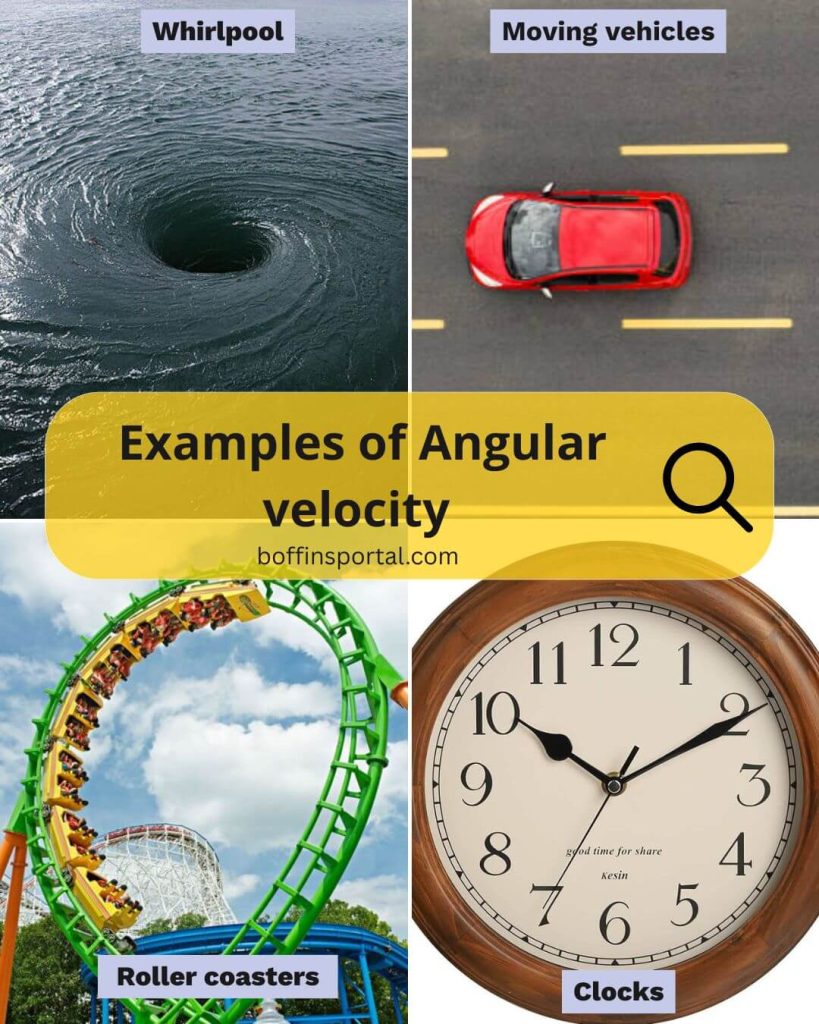Ever wondered what concept scientists use in the design of engines, turbines, and other rotating machinery, as well as in the study of celestial mechanics, such as the motion of planets and stars?
Anyone interested in the mechanics of rotating objects must understand angular velocity. By learning about the properties and characteristics of angular momentum, engineers and scientists can design better machines and systems and gain a deeper understanding of the physical world around them.
What Is Angular Velocity?
Angular velocity is the rate at which an object rotates around a fixed point. It is measured in units of radians per second and can be thought of as how quickly an object spins.
Angular velocity is a vector quantity with both magnitude and direction. The direction of angular velocity is perpendicular to the plane of rotation and follows the right-hand rule.
Its magnitude is determined by the rate of change of angular displacement. The faster an object is rotating, the greater its angular velocity.
Angular velocity is related to linear velocity through the radius of rotation. Specifically, the linear velocity of an object is equal to the product of its angular velocity and its radius.
According to the law of conservation of angular momentum, the angular velocity of an object will remain constant if no external torque is applied.
Angular velocity is typically measured in radians per second (rad/s), although degrees per second (°/s) are sometimes used.

Real-Life Examples of Angular velocity
Angular velocity is an essential concept in physics that finds extensive applications in our daily lives. Here are some examples of angular velocity in real life.
1. Earth’s Rotation
Earth takes approximately 24 hours to make one complete rotation around its axis. Therefore, the Earth’s angular velocity is 2π/86400 radians per second. This uniform rotation is responsible for the alternation of day and night.
2. Moving Vehicles
Angular velocity is also applicable to vehicles moving in circular motion. For instance, consider a car traveling around a bend. The car’s wheels create an angle relative to the direction of motion, causing it to rotate around the bend. The angular velocity at any point is directly proportional to the car’s speed and inversely proportional to the radius of the curve.
3. Whirlpool
One of the most common examples of angular velocity is seen in whirlpools. A whirlpool is a circular current that forms when two opposing currents meet. The current’s speed and the whirlpool’s radius determine its angular velocity.
4. Merry-Go-Round
A Merry-Go-Round is another example of a circular motion, making it an ideal example of angular velocity. It is a rotating platform with seats or animals for children to ride on. The platform rotates around its axis, and its angular velocity is determined by the speed at which it rotates and the circle’s radius.
5. Tornadoes
Tornadoes are formed by rotating columns of air, which create a spinning motion known as angular velocity. This spinning motion generates an angular velocity that can cause devastating damage to buildings and other structures in its path. Tornadoes are often associated with thunderstorms and occur when warm, moist air rises rapidly into the atmosphere and interacts with cooler air above it.
6. Clocks
The mechanism behind clocks involves circular motion that utilizes angular velocity as well. The hands on a clock move in a circle around the center point or axis, with the second hand completing one full rotation every 60 seconds. This means its angular velocity is constant and equal to 6 degrees per second. Similarly, the minute hand completes one full rotation every hour, while the hour hand takes 12 hours to complete one full rotation.
7. Roller Coasters
The cars on a roller coaster track move in a circular path, creating an angle relative to the direction of motion. The speed and radius of the turns determine the angular velocity, contributing to the thrilling experience of riding a roller coaster.
8. Gymnastics
Gymnastics is a sport that involves various forms of rotation around different axes. For instance, athletes perform flips and twists in mid-air during a gymnastic routine. Their angular velocity determines how fast they rotate and how many rotations they can complete before landing.
9. Satellite Orbits
Like planetary orbits, satellite orbits also depend on angular velocity. The speed at which a satellite rotates around the Earth affects its altitude and trajectory, making it an essential factor in space exploration and communication.
10. Baseball Pitching
In baseball pitching, the pitcher’s arm rotation determines the speed and trajectory of the ball as it travels towards home plate. The angular velocity of the arm contributes to the pitch’s spin rate, affecting its movement and making it more challenging for batters to hit.
11. Wind Turbines
Wind turbines are another example of circular motion that utilizes angular velocity. As the blades of a wind turbine rotate around their axis, they generate electricity by converting kinetic energy into electrical energy.
Also Check: 10 Instantaneous Velocity Examples in Everyday Life
